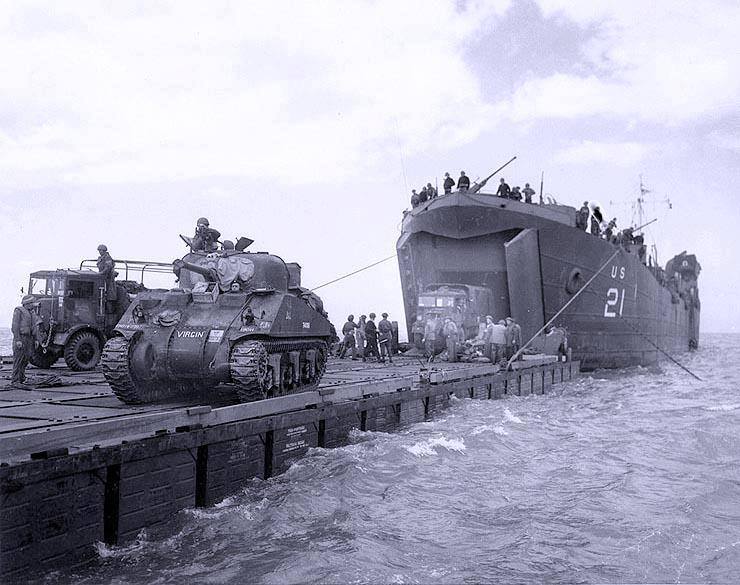D-Day: Pausing to Remember the Largest Seaborne Invasion in History

Today, June 6, marks the 79th anniversary of the beginning of the Allied forces' landing on the beaches of Normandy, France for what was called the “liberation of Europe.” Although planning is already underway for larger events next year to mark the milestone 80th anniversary, each passing year becomes more significant as fewer veterans remain to recount firsthand the stories of bravery from that day.
It was the largest amphibious assault in history supported by years of planning and ingenuity as well as a flotilla of ships both for the landing and in the days that followed. The beach landings, the efforts at climbing the cliffs, and the paratroopers that went in behind enemy lines to take control of key crossroads are perhaps the most enduring symbols of courage supported by countless personnel all along the operation. The Maritime Executive pauses to remember the bravery and sacrifice of everyone on both sides of the conflict.
Officially known as Operation Overlord, but better known as D-Day, the heroic efforts are remembered as the finest hour in the response in the face of aggression and tyranny. On June 6, 1944, Allied forces under General Dwight D. Eisenhower took advantage of a narrow weather window and stormed the beaches at Normandy, France.
To support the operation, the Allies had a force of 150,000 soldiers, 11,000 aircraft, and 7,000 vessels at their disposal, including 4,000 landing craft and 860 merchant ships. Despite its massive size, "Operation Overlord" was kept secret until the beginning of the assault, a success attributable to a careful campaign of deception.
The target 50-mile stretch of the Normandy coast was divided into five sectors: Utah, Omaha, Gold, Juno, and Sword Beach. While the weather on D-Day was far from ideal, postponing would have meant a delay of at least two weeks, as the invasion planners had requirements for the phase of the moon, the tides, and the time of day that meant only a few days in each month would work.
Despite the weather, the landings were a success. By the end of the first day Allied troops were on shore and ready to push Nazi forces out of France - but at a heavy price. The men landed under heavy fire from gun emplacements overlooking the beaches, and the shore was mined and covered with obstacles such as wooden stakes, metal tripods, and barbed wire. 4,400 Allied personnel died in working their way up the beach, including 2,500 American soldiers. The landing at Omaha Beach accounted for nearly half of the casualties, as steep terrain and limited fire support made the going especially tough.
Within a day, naval forces began to engineer the installation of a temporary seaport at Omaha and Gold beaches. Dozens of merchant ships were stripped down, dispatched to the site, and sunk in place as block ships to create rudimentary breakwaters, making it easier to bring landing craft onto the beach. The armed crew of these grounded block ships were under aerial bombardment and artillery fire for weeks.

The immediate aftermath of the landings: an instant port for LSTs, arriving by the dozens (USN)

Within weeks, engineering teams turned the beachhead into a rudimentary port, complete with piers and floating roadways. It handled four million tonnes of cargo to fuel the fight over the next 10 months.
Today a few remnants of the day are still at the beaches and a series of museums along the coastline. However, the most poignant reminder of the sacrifices is the cemeteries overlooking the beaches with their simple white markers to honor the individuals who gave their lives to free the occupied nations and return peace to Europe.

(Bjarki Sigursveinsson photo - public domain)

